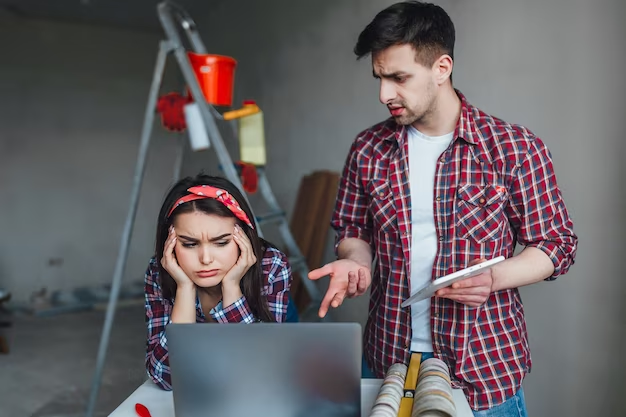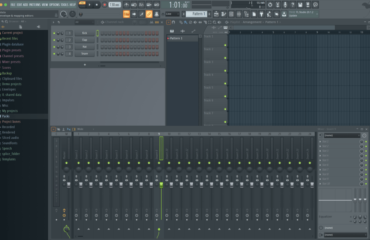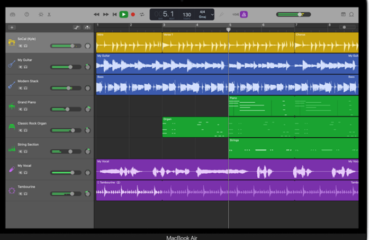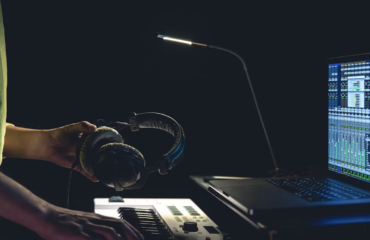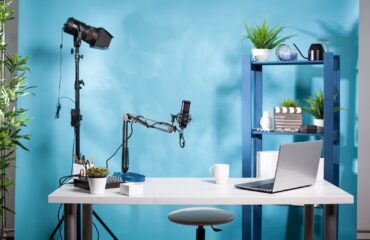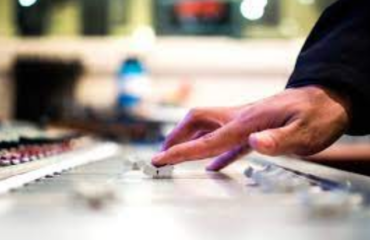Building a studio requires careful planning, attention to detail, and a thorough understanding of the costs involved. Whether you’re a musician, photographer, or filmmaker, having a dedicated studio space can greatly enhance your creative endeavors. However, it’s crucial to be aware of the financial implications before embarking on a studio construction project. By gaining insight into the factors that influence costs, you can make informed decisions and ensure a successful outcome.
Factors Affecting Studio Construction Costs
The cost of building a studio can vary significantly based on several key factors. Let’s explore each of these factors in detail:
Location and Size
The location and size of the studio play a vital role in determining the overall cost. Real estate prices differ from one region to another, and building in a metropolitan area might be more expensive compared to a suburban or rural location. Additionally, the size of the studio, measured in square footage, directly impacts construction expenses and ongoing operational costs.
Studio Type and Purpose
Different types of studios have varying requirements and associated costs. Music recording studios necessitate acoustic treatment, soundproofing, and specialized equipment. Photography studios may require specific lighting systems, backdrops, and props. Video production studios often need green screens, cameras, and editing suites. Understanding your studio’s purpose is crucial to estimating costs accurately.
Acoustics and Soundproofing
Acoustics and soundproofing are vital considerations for any studio. Proper acoustic treatment ensures optimal sound quality within the studio, while soundproofing prevents external noise from disturbing recordings or shoots. Materials such as acoustic panels, diffusers, bass traps, and specialized insulation contribute to the overall cost.
Equipment and Technology
The choice of equipment and technology significantly impacts the cost of building a studio. From high-quality microphones and instruments to cameras, lighting systems, and editing software, investing in the right tools is essential. The level of sophistication and brand preference can greatly affect the expenses.
Interior Design and Furnishings
Creating a comfortable and inspiring environment within the studio is essential. This includes selecting appropriate flooring, wall finishes, lighting fixtures, furniture, and decor. Interior design and furnishings contribute to the overall ambiance and functionality of the space, impacting both the cost and the user experience.
Permits and Regulations
Before beginning construction, it’s crucial to obtain the necessary permits and comply with local regulations. Permitting fees, inspections, and engaging professionals for code compliance are essential expenses to consider.
Cost Breakdown: Building a Studio from Scratch
To better understand the cost implications of building a studio, let’s break down the expenses involved:
1. Construction and Labor Costs
Construction and labor costs are significant portions of the budget. Hiring skilled contractors, architects, and construction teams is essential to ensure a well-built and structurally sound studio. Costs vary based on location, complexity of the design, and the level of customization required.
2. Acoustic Treatment Expenses
Acoustic treatment is a critical aspect of studio construction. The cost depends on the size of the studio, the level of sound isolation required, and the materials used for sound absorption, diffusion, and reflection control.
3. Electrical and Wiring Costs
Installing proper electrical wiring, outlets, and lighting fixtures is essential for any studio. This cost includes electrical work, hiring electricians, and complying with safety regulations.
4. HVAC System Installation
Maintaining a comfortable temperature and controlling humidity levels are crucial for a studio’s functionality. The cost of installing a suitable HVAC (Heating, Ventilation, and Air Conditioning) system should be factored into the budget.
5. Equipment and Technology Investments
The cost of equipment and technology varies depending on the type of studio. From microphones, instruments, and amplifiers to cameras, lenses, and editing software, investing in high-quality tools is essential for professional results.
6. Interior Design and Furnishing Expenses
Creating an inspiring and functional studio space requires careful consideration of interior design and furnishings. This cost includes flooring, wall finishes, lighting fixtures, furniture, decor, and any specialized elements required for the studio’s purpose.
7. Permitting and Professional Fees
Acquiring permits, engaging professionals, and complying with regulations involves additional expenses. This includes permit fees, architect fees, legal fees, and any other professional services required during the construction process.
Tips for Cost-Effective Studio Construction
When building a studio, cost-effectiveness is crucial. Here are some valuable tips to help you manage expenses without compromising quality:
Plan and Research Thoroughly
Thorough planning and research are key to understanding the requirements and costs involved in building a studio. Identify your needs, study industry standards, and consult professionals for guidance.
Set a Realistic Budget
Establish a realistic budget that considers all aspects of the studio construction process. Account for contingencies and unexpected expenses to avoid budget overruns.
Prioritize Essential Features
Identify the essential features required for your studio and allocate your budget accordingly. Prioritize elements that directly impact the quality of your work, such as acoustics, equipment, and technology.
Consider Future Expansion
If possible, design your studio with future expansion in mind. This can help avoid costly modifications or the need for a complete overhaul when your studio outgrows its initial size.
Optimize Acoustics and Soundproofing
Invest in proper acoustic treatment and soundproofing from the beginning. Retrofitting a poorly designed studio can be expensive and disruptive to your workflow.
Explore Used Equipment Options
Consider purchasing used equipment from reputable sources. Used gear can often offer significant savings without compromising quality.
Seek Professional Guidance
Consulting with professionals in studio construction can provide valuable insights and cost-saving strategies. Architects, contractors, and acousticians can help optimize your studio design and identify potential cost efficiencies.
Get Multiple Quotes
Obtain multiple quotes from contractors and suppliers to compare prices and negotiate the best deals. This can help ensure you receive competitive pricing for materials, labor, and services.
Studio Construction: DIY vs. Hiring Professionals
Deciding whether to undertake a studio construction project as a DIY endeavor or hire professionals depends on several factors. Let’s explore the pros and cons of each approach:
Pros and Cons of DIY Studio Construction
DIY studio construction can be appealing for those with specific technical skills, a limited budget, or a desire for complete creative control. However, it’s essential to consider the following:
Pros:
- Cost savings on labor and professional fees;
- Complete control over the design and construction process;
- Flexibility to work at your own pace.
Cons:
- Limited expertise in areas such as acoustics, electrical work, and construction;
- Time-consuming and potentially disruptive to your creative workflow;
- Risk of cost overruns and suboptimal results.
Benefits of Hiring Professionals
Hiring professionals for studio construction offers several advantages, including:
- Expertise and experience in studio design and construction;
- Compliance with industry standards and regulations;
- Time savings and efficient project management;
- Assurance of quality workmanship;
- Reduced risk of costly mistakes and future renovations.
Case Studies: Studio Construction Costs
Let’s explore three case studies to illustrate the range of costs associated with different types of studios:
Music Recording Studio
A music recording studio typically requires a medium-sized space with excellent acoustics and soundproofing. Construction costs can range from $50,000 to $150,000 or more, depending on factors such as location, studio size, acoustic treatment complexity, and equipment choices.
Photography Studio
A photography studio may have diverse requirements, including spacious shooting areas, specialized lighting systems, and customizable backdrops. Construction costs can vary from $20,000 to $100,000, depending on the studio’s size, location, equipment needs, and aesthetic considerations.
Video Production Studio
A video production studio often requires larger spaces to accommodate sets, green screens, and editing suites. Construction costs can range from $100,000 to $500,000 or more, depending on factors such as studio size, equipment specifications, audiovisual infrastructure, and post-production requirements.
Selecting the Right Location
Choosing the right location for your studio is crucial. Consider the following factors when deciding where to build your studio:
1. Proximity to Target Market
Ensure that your studio is conveniently located for your target market. If you’re targeting musicians, being close to music hubs or entertainment districts may be beneficial. For photographers, consider areas with high demand for professional photography services.
2. Accessibility and Parking
Ensure that your studio is easily accessible to clients and visitors. Sufficient parking space or proximity to public transportation can greatly enhance convenience and attract more clients.
3. Zoning and Regulations
Check local zoning regulations to ensure that the chosen location allows for studio construction. Familiarize yourself with any specific regulations or permits required for operating a studio in that area.
4. Future Growth Potential
Consider the potential for future growth and expansion in the chosen location. Are there opportunities for collaboration, networking, and access to a vibrant creative community? Evaluate the long-term prospects of the area before finalizing your studio’s location.
Financing Your Studio Construction
Financing your studio construction project requires careful planning and consideration. Here are some financing options to explore:
Self-Funding
If you have sufficient savings or access to personal funds, self-funding can be a viable option. This approach offers complete control over the project and eliminates the need to involve external financing sources.
Business Loans
Obtaining a business loan from a financial institution is a common method of financing studio construction. Research and compare loan options, interest rates, repayment terms, and eligibility criteria to secure the best financing deal for your needs.
Crowdfunding
Crowdfunding platforms can be an effective way to raise funds for your studio. Create a compelling campaign, showcase your vision, and offer attractive rewards to entice backers who are passionate about supporting creative projects.
Investors and Partnerships
Consider seeking investors or forming partnerships with individuals or organizations interested in the success of your studio. In exchange for their financial support, they may acquire a share of ownership or receive a percentage of future profits.
Grants and Sponsorships
Explore grants and sponsorships offered by government agencies, arts organizations, or corporate entities. These sources of funding often target creative projects and may provide financial assistance for studio construction.
Studio Maintenance and Operational Costs
Maintaining a studio involves ongoing expenses. Be prepared for the following maintenance and operational costs:
Utilities
Budget for electricity, water, heating, cooling, and internet services. Consider energy-efficient solutions to reduce long-term utility costs.
Equipment Maintenance and Upgrades
Regular maintenance and occasional upgrades of equipment are necessary to ensure optimal performance and stay up-to-date with technological advancements. Allocate funds for equipment servicing and potential replacements.
Insurance
Protect your studio and its assets by investing in appropriate insurance coverage. This may include property insurance, liability insurance, and coverage for equipment, instruments, or valuable artwork.
Marketing and Promotion
Allocate a portion of your budget for marketing and promotion activities. This may include online advertising, website maintenance, social media management, and other strategies to attract clients and generate business.
Professional Fees and Licenses
Factor in costs for professional services such as legal advice, accounting, and licensing fees. Consulting with experts can ensure compliance with regulations and help manage the administrative aspects of running a studio.
Conclusion
Building a studio is an exciting endeavor that requires careful planning and budgeting. By understanding the factors influencing the cost, breaking down expenses, and following cost-effective strategies, you can successfully create a studio that meets your creative needs without breaking the bank. Remember to research, consult professionals, and prioritize essential features to ensure a smooth and cost-efficient studio construction project.
